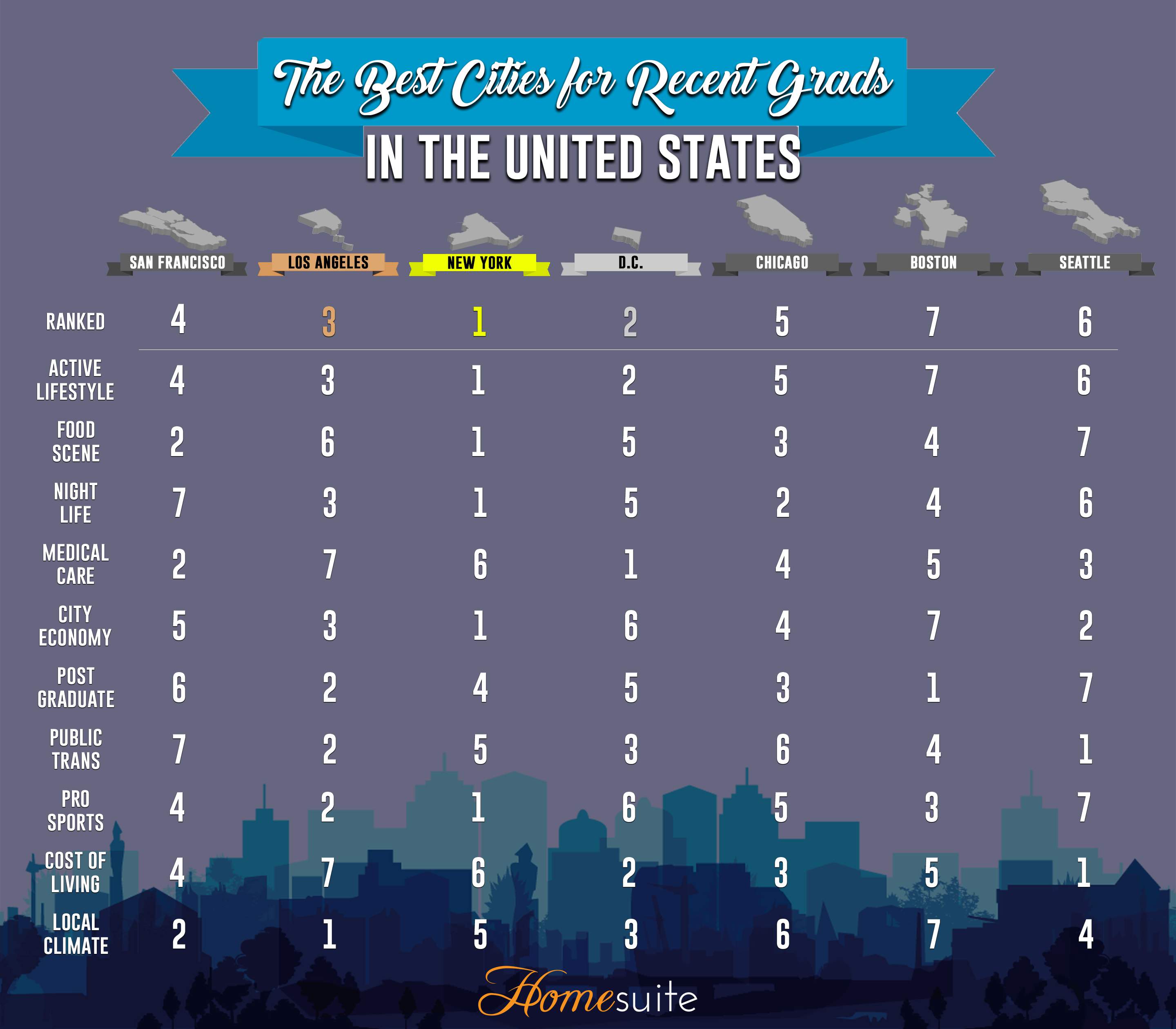When navigating such a complex subject, it helps to have some data. This infographic breaks 7 cities down into 10 unique categories. Cities are ranked against each other on a scale from 1 to 7 (one being the best and 7 being the worst in a given category).
HomeSuite researchers compiled information from their own database, narrowing down indicators for each category. The “Active Lifestyle” category didn’t take into account access for gyms, but rather the capacity of a resident to be active outdoors (e.g. at a park). La Liste scores were used to determine which cities had the greatest rankings from food professionals who have traveled the world. Some cities easily took the cake in one category, like San Francisco, which won the title for the best climate. However, other cities that are not known for the beautiful weather had other striking benefits – like Seattle, which ranked as having the best public transit and cost of living. Boston stood out as the best city for post-graduate opportunities, while D.C ranked first as a medical care provider. Overall, New York won more categories than any other city, proving itself a rich location for nightlife, sports, food, active lifestyles, and a strong economy. Of course, one major downside exists for those hoping to live in New York city: the sky-high cost of living. College graduates must assess what’s most important to them, accepting the less-glamorous aspects of their chosen city. No location can provide the best of everything, but knowing each metro’s strengths and weaknesses is a good start to finding your ideal home. Featured photo credit: reynermedia flickr via flickr.com
